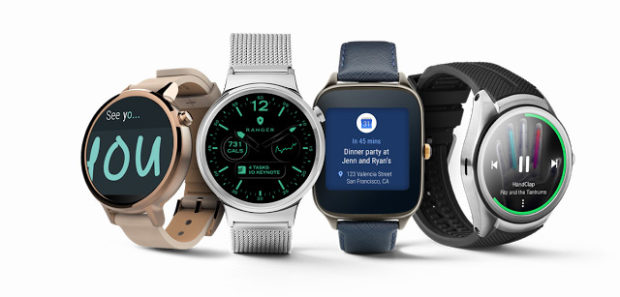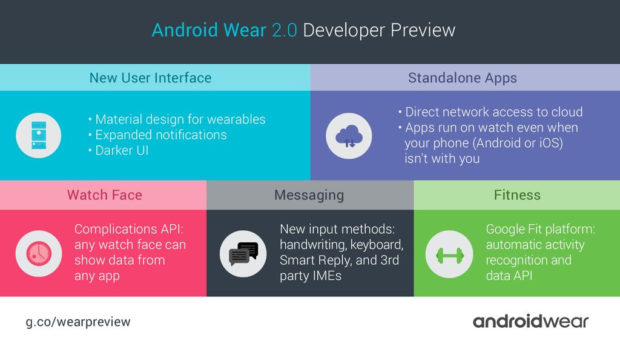 Google I/O 2016 kicked off today with the much anticipated keynote. On the wearables front, Google announced Android Wear 2.0, the first full point upgrade since Android Wear was first released back in September 2014. “Based on what we’ve learned from users and developers, we’re evolving the platform to improve key experiences on the watch, including watch faces, messaging, and fitness,” explained David Singleton, VP of Engineering.
Google I/O 2016 kicked off today with the much anticipated keynote. On the wearables front, Google announced Android Wear 2.0, the first full point upgrade since Android Wear was first released back in September 2014. “Based on what we’ve learned from users and developers, we’re evolving the platform to improve key experiences on the watch, including watch faces, messaging, and fitness,” explained David Singleton, VP of Engineering.

This latest version gives Android Wear devices greater autonomy by introducing support for standalone apps. This was achieved by eliminating the requirement to use the Data Layer APIs, allowing the apps to offer the same functionality even if the paired smartphone is not near by. It also allows apps to offer the same functionality whether the watch is paired to an Android or iOS device.
Android Wear 2.0 will also benefit from some user interface improvements. Along with a new notification design, app launcher and watch face picker, Google updated the Material Design to make it more consistent and intuitive. A new Material Design for Wearables guide will help developers take advantage of the new UI.
Google also introduced a new Complications API that will allow developers to customize watch faces with additional information and both keyboard and handwriting input support to give users more flexibility in how they enter text on their watch.
Google also retooled the notification template with a new layout optimized for quick and responsive messaging. The same template will also be available on devices powered by Android N when it comes out.
With a greater emphasis on health, the Google Fit platform has also been improved. Not only does it make it easier to use fitness data from other tracking platforms but it will now be able to automatically detect actions like walking, running and biking. Step counting has been improved and a step recording subscription will no longer be necessary.
Android Wear 2.0 is also ready for the upcoming launch of Android N. New features like Data Saver and new emojis will be supported from the onset.
Android Wear 2.0 will be released this fall. Developers can get their hands on a Developer Preview today to begin updating their apps or building new ones.
Source : Android Developers Blog
